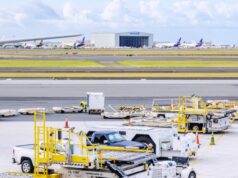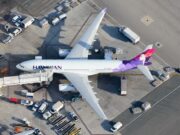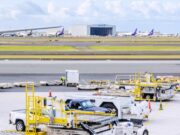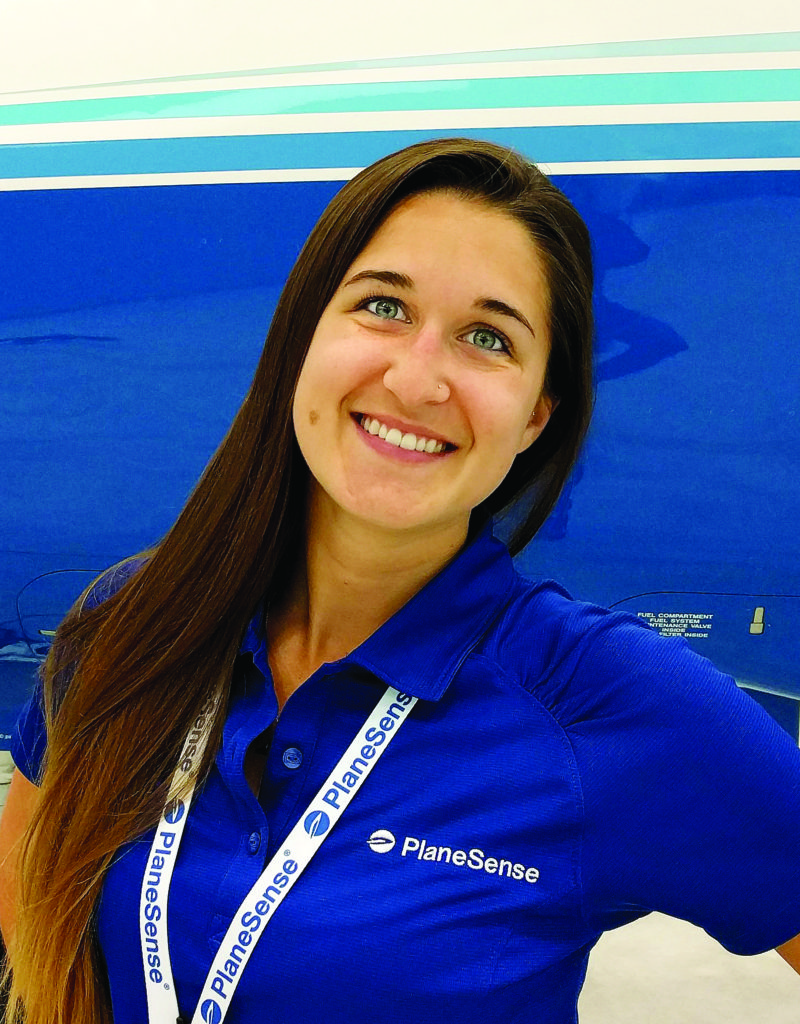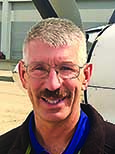

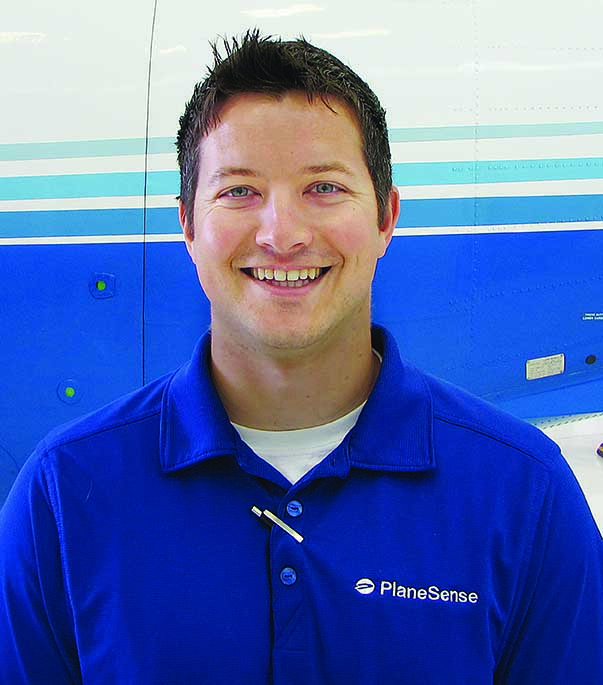
Assistant Chief Pilot, PlaneSense, Inc.
ABOUT PLANESENSE, INC.
PlaneSense, Inc. is one of the leading fractional aircraft ownership companies in the U.S. Established in 1996, the company has grown to become the largest civilian PC-12 fleet in the world. With approximately 350 employees including 150 pilots, 18 pilot reporting bases, and 36 aircraft, PlaneSense Inc. has become known for its superior service, commitment to safety and reliability, as well as for being a great employer.
PlaneSense, Inc. seeks pilots with varying backgrounds and experience. While some are new to the field, others have retired from careers with the military or commercial airlines. PlaneSense, Inc. is also proud to see a growing number of female pilots among its ranks. In fact, our highest-ranking pilot in seniority is a woman!
FLEET FACTS
With an average fleet age of less than 5 years, the aircraft operated by PlaneSense are immaculate. With both NG and Legacy PC-12 aircraft, as well as three Nextant 400XTi, PlaneSense has an already booming fleet that will continue to grow. PlaneSense, Inc. is the launch customer for the Pilatus PC-24 jet, set for delivery in late 2017. The PC-12 NG aircraft are equipped with a Honeywell Apex avionics system sporting an FMS and an all-glass cockpit. The Legacy models are equipped with touchscreen Garmin GPS, and EFIS digital displays.
In order to service this state-of-the-art-fleet, PlaneSense, Inc. enlists the services of its affiliate company, Atlas Aircraft Center, Inc. located at the PlaneSense headquarters in Portsmouth, NH. Atlas Aircraft Center has been recognized with the FAA Diamond Award for Excellence each year since 2002. The facility boasts a 40,000 square foot hangar with heated floors, and an additional 44,000 square feet of offices and back-shops to support and manage the daily operations.
The future of PlaneSense, Inc. continues to build on its three growth strategies:
- Excel in customer service.
- Be the most cost-effective solution to customers seeking point-to-point air transportation.
- Operate from short runways in order to provide customers with a wider range of accessible airports than can be found with other fractional jet operators.
Steve Jacques
Retired, commercial airlines, Captain with PlaneSense, Inc. since 2015
“I was not looking for just a flying job. In fact, PlaneSense was the only flying job that I applied for. I was primarily looking for a position in aviation. I wanted to continue to be “part of a team.” The thought of hanging up my uniform on the last day of service, and lounging on the deck with an iced tea appealed to me… for about two tenths of a second. My criteria for determining a company’s desirability is weighted heavily on the personality/behavior/likability of the people who work for the company. Also, for a flying job, the mindset of management, concerning AC maintenance and safety is also heavily weighted. I would tell prospective retirees that PlaneSense scores high in both of these areas. When the captain makes a final determination based on safety (to fly or not to fly), the CP’s office, and/or maintenance does not second-guess his/her decision.
Flying for PSI allows one to get back to a more fundamental form of flying, which is lost to a great degree in the airline flying arena. We all started “flying the fundamentals” years (decades) ago, and it is enjoyable to be able to fly smaller airplanes into smaller, and sometimes more challenging airfields.”

Part of the PC-12 fleet outside the PlaneSense, Inc. headquarters in Portsmouth, NH.
David Snyder
First Officer, with PlaneSense, Inc. since February 2017
“I haven’t been working at PlaneSense for very long, but I loved going to the Dominican in one of my early cycles. It was a fun adventure. The training was awesome and we have very knowledgeable instructor pilots.
I got sick on the road at one point and the company took good care of me. I didn’t feel pressured to fly – PlaneSense just wanted me to be safe. I’m proud of our safety here.”
There is no better platform for this mission than the PC-12 and PC-24 aircraft. With its versatile characteristics, PlaneSense pilots can hop from the volume production of JFK International airport to a privately held grass strip in any leg. In the Caribbean, PlaneSense pilots routinely land on coral runways that jet aircraft simply cannot access. As a fractional aircraft operator, flights are conducted under FAR Part 91, Subpart K. PlaneSense, Inc. also operates a part 135 charter service under Cobalt Air LLC. PlaneSense pilots are assigned to these flights as well.
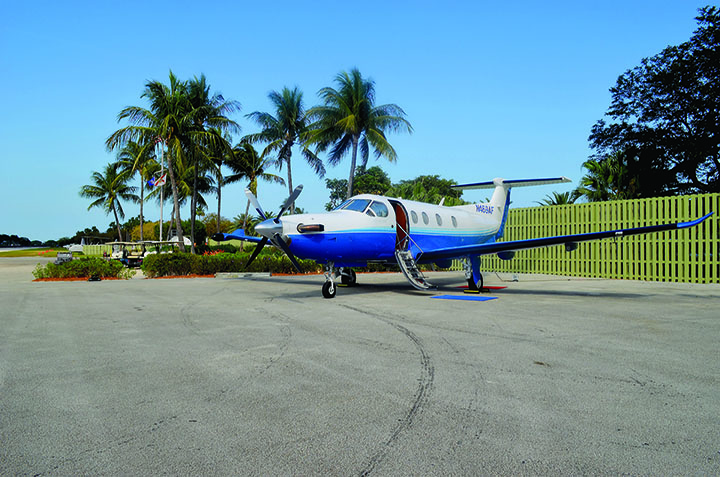
Thomas Sabanos
First Officer, with PlaneSense, Inc. since September 2016
“There’s something appealing about flying from a little airport in the middle of nowhere, then flying into New York, then turning around to fly to the Bahamas, then off to Canada. No day is the same at Pl
aneSense. It’s a pilot’s company. We’re actually flying the plane, not a computer. It’s small fields and lots of stick and rudder. My skills are put to the test every time. I enjoy that! I feel confident thanks to training. It’s a testament to the training department at PlaneSense and how well the instructors prepared us. You have to work hard, but the instructors work equally as hard to help you. The planes are also well taken care of. Pilatus is a phenomenal platform and well known for being top notch. Maintenance keeps each aircraft in great condition. The planes are all relatively new, which is
amazing.”

PILOT LIFE AT PLANESENSE, INC.
There is no denying the fact that an operation which services so many locations must be backed by a team of highly qualified professionals. To manage all the flights, a Flight Operations Center schedules and manages incoming owner flight requests and pairs them with the crew and aircraft best suited for the operation. The team’s success has led to a 99.7% on-time departure rate not including weather, or customer-induced delays. PlaneSense, Inc. pilots are on duty for eight consecutive days followed by six consecutive days off. Pilots can choose one of 18 bases, and are required to live within 100 miles of their chosen location. There is no bidding for bases and pilots may move between them.
PlaneSense, Inc. bases:
- PSM
- HPN
- CVG
- IAD
- RIC
- CLT
- BNA
- PDK
- MCO
- MIA
- MSP
- DFW
- MDW
- IND
- PBI
- PHL
- TPA
- CHS
 PARTNERSHIPS WITH AVIATION PROGRAMS
PARTNERSHIPS WITH AVIATION PROGRAMS
PlaneSense, Inc. has recently partnered with many aviation accredited institutions to guarantee interviews for pilots meeting specific requirements. PlaneSense, Inc. currently has formal agreements with major training facilities such as Liberty University, University of North Dakota, Falcon Aviation Academy, Western Michigan University, Embry-Riddle Aeronautical University, Flight Safety Academy, and ATP.
Minimum Qualifications:
First Officers
- Minimum of 500 hours total time to qualify
- Commercial
- SEL Instrument Rated
Direct entry Captain
-
2,000 hours total time including:
-
750 hours PIC
-
100 hours instrument
-
Commercial
-
SEL Instrument Rated
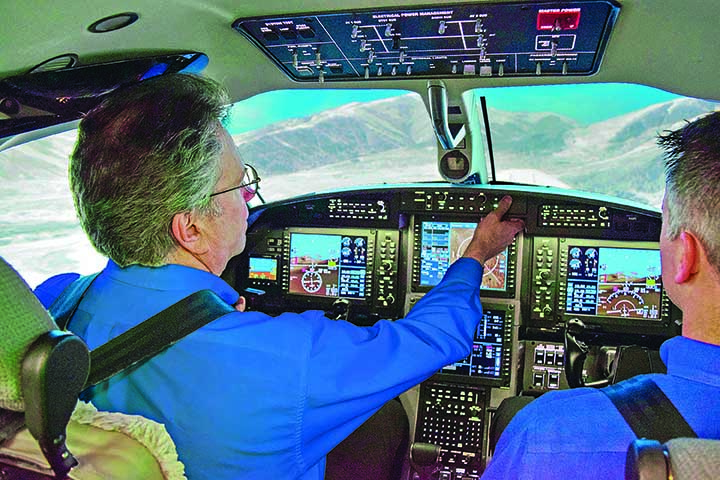
PILOT REQUIREMENTS AND TRAINING
Candidates may apply for First Officer or Captain positions in the PC-12. Initial and recurrent ground schools are conducted at the company headquarters in PSM with accommodations provided by PlaneSense, Inc. After initial ground school, pilot candidates attend full motion PC-12 simulator training at Flight Safety in Dallas. Once training is successfully completed, the candidate is an official PlaneSense pilot.
The road to becoming a PC-12 pilot for PlaneSense is often challenging. About 20% of the candidates who begin training will not complete the program and reach the final check ride. The critical element for success is the ability to interact well with owners. It is important to note that the curtain between the cockpit and the cabin stays opens. Successful pilots at PlaneSense are highly skilled in the realm of IFR flying as well as having a well-suited personality, which allows them to provide an extraordinary level of service during their direct interactions with owners. Pilots play an integral role in ensuring that aircraft ownership is an exceptional experience.
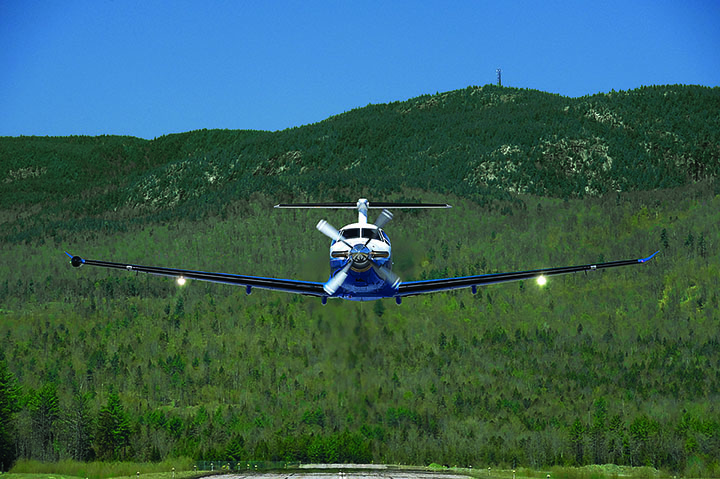
If you’re looking for adventure, we’re looking for you.
COMPENSATION AND BENEFITS
For the pilots that fit the mold, a career at PlaneSense is rewarding. With merit-based upgrades as opposed to seniority, advancement to Captain, Instructor Pilot, and Check Airman status can occur as soon as time permits. First Officers start with a base salary of $30k, which increases to $34k after 6 months. Base salaries for PC-12 Captains, not including IP or Check Airman pay, start at $50k and top out at $86k. Career pilots who advance to the jet program top out at $130k. In addition to their base salaries, PlaneSense, Inc. pilots have opportunities for overtime, holiday pay, and an extra $250 for Captains or $150 for FOs that return to base after 8pm on their 8th day of duty. Instructor pilots earn an average of $8k extra per year while Check Airman earn an average of an extra $12k. PlaneSense, Inc. offers its pilots a host of benefits including health, dental, vision, and life insurance, as well as 401k matching, AD&D, short and long term disability, and flexible spending accounts. Pilots are awarded one 8-day vacation cycle after 1 year of service, 2 cycles after 4 years, and 3 eight day vacation cycles after 13 years of service. Personal days and sick days are also allotted.
Allowances are provided for cell phones, parking and ATP multi when moving up to the jet. Pilots are also reimbursed for yearly FAA medical exams, and Captains may use a PC-12 for ATP check rides.
PlaneSense, Inc. takes a lot of pride in its service and its airplanes. With over twenty years in the business, PlaneSense, Inc. and its team continues to grow, adding new aircraft and pilots each year. From scheduling, to maintenance, to the pilots, the PlaneSense, Inc. team views their roles as an extended family, and not just a job. If you’re looking for adventure, we’re looking for you.
For more information on joining the PlaneSense, Inc. team, visit us at www.planesense.com/careers, or contact the recruitment team at careers@planesense.com.
Follow PlaneSense, Inc. via social media on Facebook, Twitter, LinkedIn, and Instagram!
Sam Blais
Captain, with PlaneSense, Inc. since 2012
I began working at PlaneSense as a Crew Services Rep in the Flight Operations Center in 2012 and was flight instructing at the same time, trying to reach my minimum hours to become a PlaneSense First Officer. I applied in November 2014 and started the First Officer class in April 2015. Training was less like school than I expected. We quickly applied the information we were learning to real life situations, which was such a great way to learn and retain it. The training instructors are far above the best around.
The people at PlaneSense – that’s what kept pushing me to pursue my FO position here. The company is one of those places where everyone is behind you all the way. I never ran into a single person who didn’t support my efforts to become a pilot. Captains kept reaching out and offering their help. It was a great experience.
I love the interactions with the owners. One owner flying with us had just received his Instrument rating and asked to plug in during the flight to listen. He waited for us to deviate around weather, then began asking us questions about what we were doing and our thought process. At the end of the flight, he was extremely appreciative and said he gained so much knowledge just from listening to our interactions with ATC and our communications throughout the flight.
For someone who had never been west of the Mississippi before, I have enjoyed all the places I get to go. My first trip to Telluride, I was like a little kid. It reminded me why I was working so hard to upgrade. It reminded me why I see myself at PlaneSense long term. It brought me back to why I stay at PlaneSense. I just made my first trip as PIC to the Bahamas in May, which was really exciting. The dynamic of what we do at PlaneSense is what drove me to work so hard to become a line pilot here. It’s something different every day and makes me love my job!
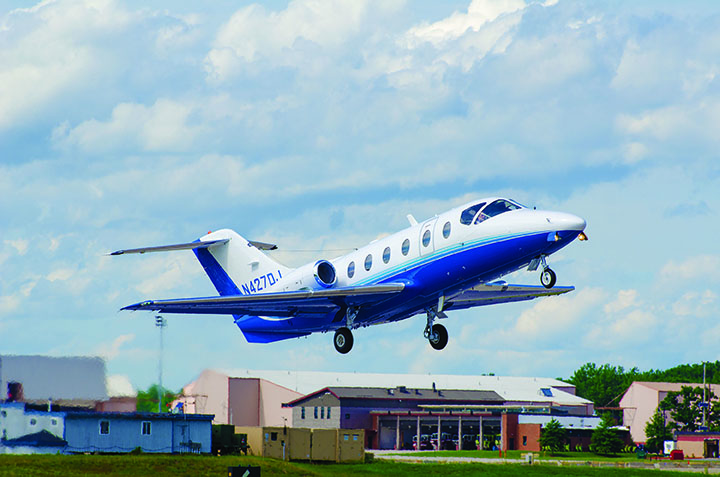
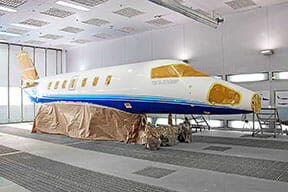
PlaneSense, Inc. will take delivery of the world’s first PC-24 jet in late 2017. The super versatile business class jet has reached a significant point in the production process, and is one step closer to joining the PlaneSense® fleet. Now sporting its signature blue stripes, the PC-24 sets a new standard of comfort, sophistication, and technology for jets in its class. PlaneSense, Inc. will also add five new PC-12 aircraft and a Nextant 400XTi jet to its fleet in 2017. Additional PC-24 jets are expected in 2018.
Matt Cerro
First Officer, Jet Program, with PlaneSense, Inc. since 2005
“I started at Planesense well over a decade ago, a twenty-three year old former flight instructor living with my college friends in a cramped apartment. Eighteen months later, I had upgraded to Captain, developed some serious instrument flying proficiency, and was feeling comfortable negotiating the alternating seasons of ice and thunderstorms in the Northeast. Along the way, I found a girlfriend, got married, and became a father. Through the ups and downs of the economy, Planesense has been a stable place to work. Now that I’m supporting a family, I’ve come to really appreciate that stability.
Our first child was born five weeks early. Murphy’s Law being what it is, she went into labor while I was on an overnight in Louisville, Kentucky. A quick phone call to management and we had permission to reposition the plane seven hundred miles back east, right to my hometown. I made it to the hospital with only thirty minutes to spare. They shifted my vacation early to give me three weeks paid time off, the head of HR personally offered her babysitting services, and we even received an embroidered baby blanket in the mail a week later. I am proud to work at a company that places that kind of value on family.
The eight on/six off schedule has worked really well for our family. My days off are free of commuting or any other work obligations. Plus we get much more time together as a family. I actually get more quality time with my wife and children than if I was working a traditional 9-5 job. “
Interview with Elaine Carter, Employee Resources & Recruiting Manager
Pre Interview:
Craig: How do you select PC-12 pilot applicants to be brought in for an interview?
Elaine: All résumés are reviewed by the Human Resources Department. Qualified applicants are invited to complete an application. All applications are reviewed by the Chief Pilots. Qualified applications are invited to an interview.
C: What can an applicant do to increase their chances of being called for an interview?
E: The applicant needs to meet our minimum requirements for Direct Entry Captain or First Officer.
Direct Entry Captain – 2000 hours TT; 750 PIC; 100 IFR.
First Officer – 500 hours TT, however 1000 TT is preferred.
C: How critical is it to attend a job fair to get an interview?
E: Not critical as we base obtaining the interview on qualifications.
C: What is the best way to prepare for an interview with your company?
E: Knowledge of VFR & IFR operations. Knowledge of Part 91 & 135 rules. Knowledge of Jeppesen and Enroute Charts.
Interview:
C: Do you recommend that applicants get to your headquarters city the day before and get a hotel room for the night?
E: Yes if applicable.
C: Can you walk me through a typical day of interviews?
E: First Officer (Portsmouth Interview)
Three Sections: Human Resources Interview; Technical Interview; Simulator Evaluation: Frasca 141 Flight Simulator in an A-36 Bonanza configuration.
PIC Web Interview
Combined HR and Technical Section
PIC Interview after Successful Completion of Web
Interview (if applicable)
Simulator Evaluation: Redbird FMX Flight Simulator in an G1000 C-172 configuration
PIC Local Candidates
Human Resources Interview
Technical Interview
Simulator Evaluation: a Redbird FMX Flight Simulator in an G1000 C-172 configuration
C: What kind of questions can an applicant expect to be asked?
E: What do they know about our company? Why do they think PlaneSense would be the right fit for them? Describe a time they used customer service. What has been the longest timeframe they have traveled away from home for an employer? Do you have any questions for us?
C: Can you give me some examples of the TMAAT questions that you like to ask?
E: Questions are specific to Customer Service based on applicant’s background. Do they understand the lifestyle of an on-demand operation? There are technical flying questions.
C: What are some of the biggest mistakes that applicants make during the interview process?
E: Poor customer service skills Proficiency in the simulator
Written test:
C: Is there a written or computer test?
E: No.
C: Is there a personality test?
E: No.
Simulator Evaluation:
C: Do you have a simulator ride?
E: Yes.
C: What type of aircraft is used for the simulator evaluation?
E: First Officer – Frasca141
Direct Entry Captain – Redbird FMX
C: What types of scenarios should an applicant expect in the simulator evaluation?
E: First Officer:
You will be asked to track and hold at an NDB/VOR, fly an ILS approach and a missed approach.
We are primarily looking for good procedures and a consistent instrument scan.
Demonstrates proficiency in flying analog (steam gauges) in a fixed based flight training device. To prepare, candidates should be instrument proficient, current, and consider obtaining time in a simulator prior to the interview date.
PIC:
You will be asked to track and hold at an NDB/VOR, fly an ILS approach, and a missed approach.
We are primarily looking for good procedures and consistent instrument scan.
Demonstrate proficiency in flying analog (steam gauges) in a fixed based flight training device. To prepare, candidates should be instrument proficient, current, and consider obtaining time in a simulator prior to the interview date.
C: What are you looking for in the simulator evaluation?
E: First Officer: Good procedures and consistent instrument scan.
Direct Entry Captain: Good procedures, consistent instrument scan, CRM and professional customer service qualities.
C: What are some of the biggest mistakes applicants make?
E: Weak instrument flying and lack of IFR procedures.
Post Interview:
C: Do you tell applicants they are hired in person that day?
E: No.
C: If not, how long do applicants have to wait to know if they are hired?
E: Within two weeks.
C: How soon can an applicant expect a class date after being hired?
E: Class dates are based on a fixed schedule.
General:
C: How many pilots does your airline expect to hire this year?
E: 85
C: Can you explain the ATP-CQP class that your company offers?
E: If you are a pilot entering as a PIC in our jet program we will pay for an outsourced ATP/CTP course.
C: Do you have a hiring bonus? Is there any specific criterion to qualify for the bonus?
E: We do not have a hiring bonus, but we do pay out a training stipend.
$500.00 after completion of ground school.
$1,000.00 after passing simulator check ride and becoming an employee.
$1,000.00 after completion of IOE.
C: Does PlaneSenese have a pilot referral program?
E: Yes. $500.00 for any employee if they refer a pilot
C: Can you describe the career progression at PlaneSense?
E: Upgrading to Captain, Instructor Pilot and Check Airmen is based on merit. Upgrade to jet operations is based on seniority.
Fast Facts:
Headquarters: Portsmouth, NH
Year Founded: 1992
Number of employees: 350
Number of Aircraft: 33 PC-12s and 3 Nextant 400 XTi
Number of Pilots: 150+
Number of Bases: 18
Bases: PSM,MCO,PDK,CLT,MDW,CVG,IAD,IND,MIA,MSP,BNA,PBI,PHL,RIC,TPA,HPN, DFW, CHS
Key Benefits: Health, Dental, Vision, 401K, Life Insurance, AD&D, STD, LTD, FSA, Loss of FAA Medical Insurance, Paid Vacation & Sick, 8 Holidays, FAA Medical Exam Reimbursement, Cell Phone allowance, per diem
Website – www.PlaneSense.com
Phone – 603-501-7600
Facebook – facebook.com/PlaneSense/
Twitter – twitter.com/PlaneSenseInc
LinkedIn – linkedin.com/company/planesense-inc-
Instagram – @planesense.us instagram.com/PlaneSense.us
Indeed: indeed.com/cmp/PlaneSense,-Inc.-2
Russ Hodgkins
Retired, USAF, Captain, April 2011
“One of the most surprising things I learned when I started looking at civilian flying jobs was how backward many companies were with regards to safety. The strong military safety culture was something I had helped nurture and I saw the positive results it created. I have felt that some in the industry might view ex-military pilots as being too safety conscious. You’ll find the opposite here at PlaneSense. The company has an excellent safety culture, which starts at the top and goes down to all the line employees in the company. I have never been forced to make a flight or take a bad airplane.
It’s an honest airplane that you really fly, as opposed to letting a computer fly. It’s reliable, has good legs, can get in and out of some incredibly short runways, and cruise up in the Jet Routes at a surprisingly fast speed. As for the mission, the best way to describe it is “every day is different.” Our flying is dictated by the desires of our clients, so on any given day you may find yourself flying into LaGuardia or an uncontrolled 2600 foot long strip in Vermont (or both, as I did a few months ago). You will do most of the planning and make most of the decisions. The days will be long, and the pace can be grueling. But you will be treated like an aviator.
Working at PlaneSense is like being in a squadron again. It’s small enough so you can get to know most of the people here. The pilots are a very diverse group, from young kids who are doing their first real flying job to retired military or major airline pilots. But you’ll find all share a love of flying and a commitment to the craft. You’ll find that as an ex-military pilot, you have experiences that you can share with the younger pilots that will make them better—you can make a difference here. Also, don’t believe what you have heard about millennials being slackers, you’ll also find that keeping up with a bunch of kids in their 20’s will keep you young!”















